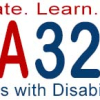
Happy 25th birthday to the Americans with Disabilities Act!

Happy 25th birthday to the Americans with Disabilities Act!

Fantastic presentation on aria-live by Russ Weakley & James Edwards. So much great research here!
If you happen to be building a Windows Universal app (or know someone who is), I just stumbled on this awesome series of posts with invaluable advice for making it more accessible.

Fantastic piece on the StackOverflow-ification of our industry and the importance of craft.

This is about tech for social good, which is awesome, but one of the most interesting bits is buried near the bottom and concerns us as web designers:
According to the Office for National Statistics, in May, 27% of disabled adults had never used the internet, compared with 7% of non-disabled adults. And last month’s report by the Extra Costs Commission found that part of the reason disabled people typically face £550 in extra living costs is due to the lack of ability of many of them to shop around online. Too many sites are not accessible to those with disabilities.

A follow-up to yesterday’s post, answering many of your questions about Web Component support in Edge.
This is a fantastic piece and perfectly echoes what many of us have been saying:
Accessibility isn’t just a legal mandate or list of requirements. It’s really about people. You.

Travis Leithead and Arron Eicholz offer some insight into the state of Web Components and what it means with regard to Microsoft’s Edge browser.

This looks so cool!

Slides from Henny Swan’s AccessU 2015 workshop. Fantastic material in here—definitely worth a look.
And if work like this is your cup of tea, Twitter is hiring a mobile accessibility engineer.